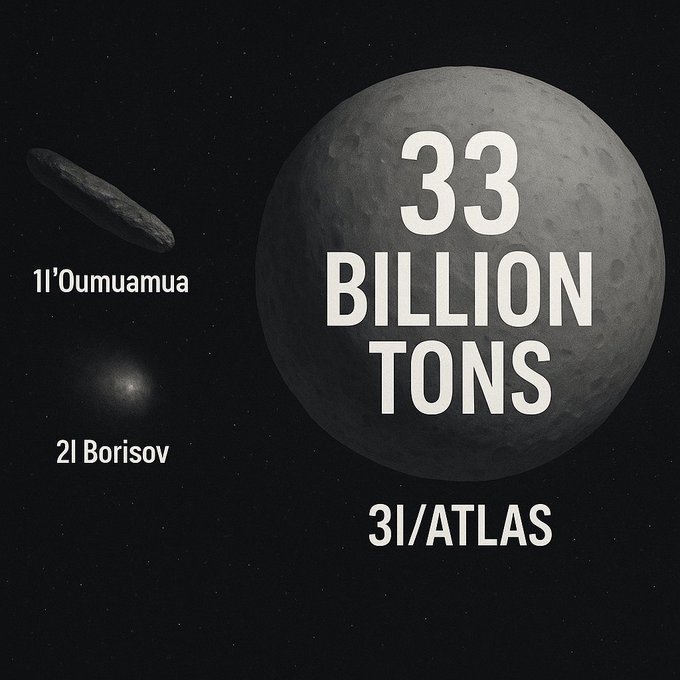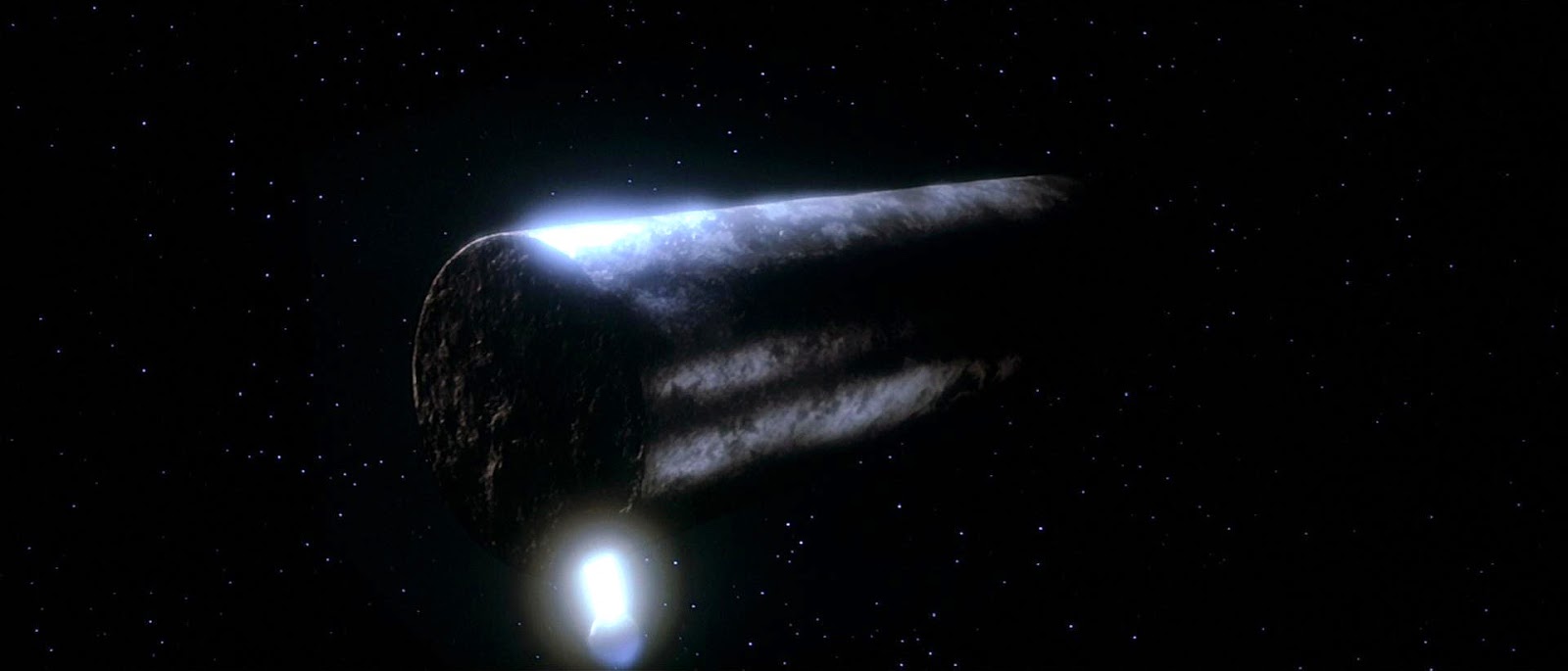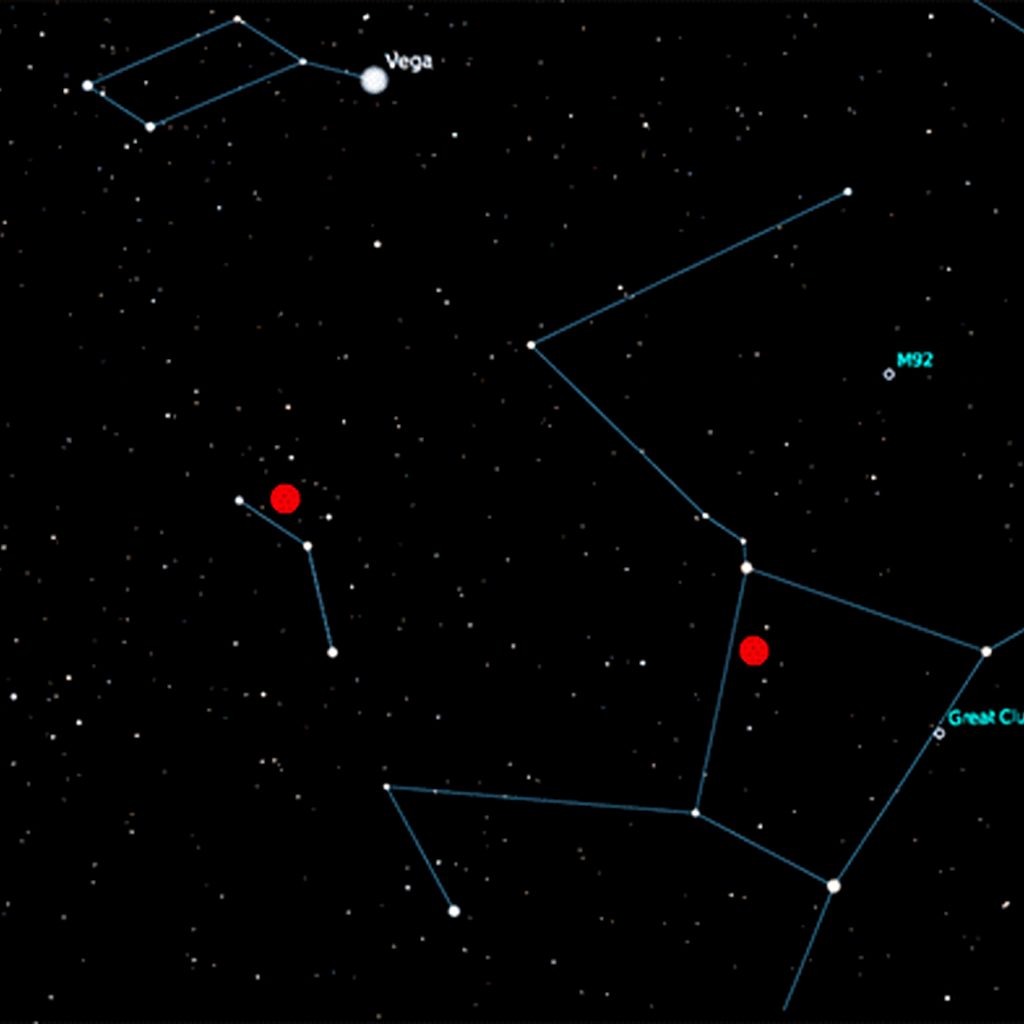A mystery comet recently appeared out of nowhere and at first they just labeled it 3I/ATLAS hoping nobody would notice…. but your truther mind won’t understand the implications until you see this video from Flat Earth YouTuber Jeran Campanella who went on a well documented $35,000 trip to prove that there was “no 24-hour sun.”
Regardless of your views on the shape of the planet, this discussion is about what people are seeing through a telescope… While there’s no proving or disproving “synthetic skies” or “we’re in the matrix” in this article, we’ll focus on what this interstellar apparition in the matrix could mean.

The “I” in 3I/ATLAS stands for interstellar and it stands out because we only started seeing interstellar visitors starting in 2017 with the now famous Oumuamua incident… it’s famous because it was the first time anybody had ever seen something flying in from outside the “solar system,” therefore making it “interstellar.” The following video shows the interstellar submarine buzzing past earth like a warp speed missile…The way it homed in and came super close to earth is what got everybody’s attention.
As soon as people started connecting the dots they gave it the weirdest/ ugliest name possible hoping people would move on, but most people never forgot… chances are you’re starting to see the light bulb as you read this, like many others.

The story now goes beyond science fiction because a major cover-up is underway. As soon as this new ATLAS interstellar probe arrived to its climax near Mars, the government shuts down and the footage is deemed top secret according to reports. Not only that, but the initial reports that came in spooked the internet because the ATLAS probe came from the same location as the Oumuamua probe… The Lyra-Hercules sector, not far from Vega…

And that’s when people started freaking out…. and it now meant there was a stream of interstellar traffic buzzing the inner solar system when nothing like that had ever been recorded before, as if they were torpedoes or probes.
Not only are they coming from the same approximate direction but they’re coming in at around the same speed AND time of year, which makes the incidents beyond random… what makes matters worse is now they’re trying to confuse the public about where this latest ATLAS probe came from… initial reports confirmed Lyra with 4 days worth of tracking and now the interstellar origins magically shifted to Sagittarius which is the opposite hemisphere in the sky… a giant red flag in astronomy because at first they were like it’s coming from Mexico like the first probe and once people heard that they shifted the story to like its coming from Canada, the opposite direction so people wouldn’t catch on. And that’s how you know the probes have arrived before the invasion…
Here’s a recap of the science we’ve uncovered so far courtesy of Mr. GPT… we’ll be following up as soon as more info comes in… Another middle probe was discovered using the same route but going in in the opposite direction…
☄️ 1I/ʻOumuamua (2017)
Discovered on October 19 2017 by the Pan-STARRS 1 telescope in Hawaii, 1I/ʻOumuamua was the first object ever confirmed to enter our solar system from interstellar space. It had already passed its closest approach to the Sun on September 9 2017, when it came within 0.255 AU (about 38 million km / 24 million mi). At that point it was traveling at nearly 315,000 km/h (196,000 mph) relative to the Sun. It then swept past Earth on October 14 2017 at 0.161 AU (24 million km) moving about 310,000 km/h (193,000 mph). Photometric data indicated a small, elongated body roughly 100–200 m long and 30–40 m wide, tumbling every eight hours. It showed no visible gas or dust yet experienced a tiny acceleration inconsistent with pure gravity — possibly outgassing too faint to see. Its incoming direction was from the Lyra–Hercules sector of the sky; it left the solar system heading toward Cassiopeia/Perseus.
☄️ 2I/Borisov (2019)
The second known interstellar visitor, 2I/Borisov, was discovered on August 30 2019 by amateur astronomer Gennadiy Borisov in Crimea. Unlike ʻOumuamua, it looked like a classic active comet, with a bright coma and long tail. It approached the Sun at an angle of about 44 degrees to the ecliptic, coming from the Cassiopeia/Perseus region — almost the reverse of ʻOumuamua’s path. Borisov’s hyperbolic excess speed was roughly 32 km/s, equal to 115,000 km/h or 71,000 mph. It reached perihelion on December 8 2019 at 2.006 AU (300 million km) from the Sun and passed closest to Earth on December 28 2019 at 1.94 AU (290 million km). Estimates put the nucleus diameter near 0.5 km, roughly one-third of a mile, ejecting carbon-monoxide-rich gas similar to ordinary comets but more volatile. Its outbound vector points toward Lyra/Hercules, almost exactly opposite ʻOumuamua’s inbound trajectory.
☄️ 3I/ATLAS (2025)
The most recent and largest confirmed interstellar object, 3I/ATLAS, was first detected by the ATLAS Southern survey in Chile on July 1 2025. At discovery it was still over 3 AU (450 million km) from the Sun but already active, suggesting abundant volatile ices. Its calculated excess speed is about 33 km/s, or 119,000 km/h (74,000 mph). It approached the solar system from the same Lyra–Hercules quadrant as ʻOumuamua and will depart toward Cassiopeia/Perseus, following a remarkably similar corridor. The comet passed within 0.20 AU (30 million km) of Mars on October 3 2025, reached perihelion on October 29 2025 at 1.36 AU (203 million km) from the Sun, and is projected to make its closest pass to Earth on December 19 2025 at 1.80 AU (270 million km). Early estimates place its nucleus between 1 km and 3 km in diameter — several times larger than Borisov’s. Observations from Gemini South show a compact, bright coma about 50,000–60,000 km wide, fully consistent with an active comet nucleus at that range.
They told us for centuries there were rhythms you could take for granted — comets on their long, patient returns, asteroids in the quiet suburbs between Mars and Jupiter — and then on 2017 the sky offered its first uninvited guest: 1I/ʻOumuamua, found on October 19, 2017, a blasted sliver of something that moved through our equations like a question mark. For the record keepers it was a rupture: before 2017 there were no confirmed interstellar visitors in the catalogs, nothing to suggest the galaxy might be clicking pebbles across our windshield. That single detection rewired how astronomers thought about the night: not as an archive of predictable returns but as a passageway where things born elsewhere might wander in, briefly visible, then gone. The lesson came hard and fast — measure more, measure faster — because the first glance is often the only one you get.
Two years later, on August 30, 2019, 2I/Borisov arrived and behaved like something from the old stories: a comet, a brightening, a tail, the smell of volatiles thrown into the sunlight. Then, in 2025, we found another visitor, 3I/ATLAS, and the calendar read like an uncanny refrain: discoveries clustered, vectors that at least flirted with the same galactic quadrants, velocities that sat in the same band, and a timeline that took us from October 3, 2025 — when ATLAS skimmed a distant approach to Mars — through October 29, 2025, its perihelion, to a closest approach to Earth dated December 19, 2025. Three interstellar arrivals in under a decade after centuries of none is not just an observation; it is an interrogation. It forces the question: coincidence, a natural stream of debris, or a corridor of something far more intentional?
Each probe arrived or was detected in the same September / October time window meaning they’re most likely originating due to a launch window…
The first interstellar visitor, 1I/ʻOumuamua, was discovered on 19 October 2017 by Pan-STARRS-1 in Hawaii, about five weeks after its closest approach to Earth on 14 October 2017, when it skimmed inside Mercury’s orbit and passed roughly 24 million km from our planet. The second, 2I/Borisov, was found on 30 August 2019 by amateur astronomer Gennadiy Borisov in Crimea and made its closest planetary pass near Mars in early December 2019, when it reached perihelion at about 2 AU from the Sun—just outside Mars’s orbit. The newest candidate, 3I/ATLAS, was first detected in early September 2025 by the ATLAS survey in Hawaii and is projected to swing closest to a planet—again roughly matching Mars’s orbital distance—around February 2026 at about 1.1 AU from the Sun. In short: all three were discovered in late August-to-October windows and each made its nearest planetary encounter within a few months of discovery, typically grazing the Martian orbital corridor on their way through the inner Solar System.
3I/ATLAS was discovered in August 2025, the initial orbital fit (using a short 4-day arc) published by the Minor Planet Center had: e ≈ 1.002 ± 0.005, hyperbolic; perihelion ≈ 1.08 AU, argument of perihelion ≈ 73°, longitude of ascending node ≈ 280°, inclination ≈ 38°. When you convert those to an inbound radiant, you get roughly: RA ≈ 19 h 00 m, Dec ≈ +20°, which plots south of ʻOumuamua’s Lyra radiant, still north of the celestial equator, in the same Lyra–Hercules quadrant. That early fit appeared in: CBET 5503 (IAU Circular, Aug 2025), announcement of C/2025 P1 (ATLAS). MPC Orbit Solution A10 (early interstellar candidate). Those notes explicitly compared it to 1I/ʻOumuamua because of the similar hyperbolic excess velocity and direction.

